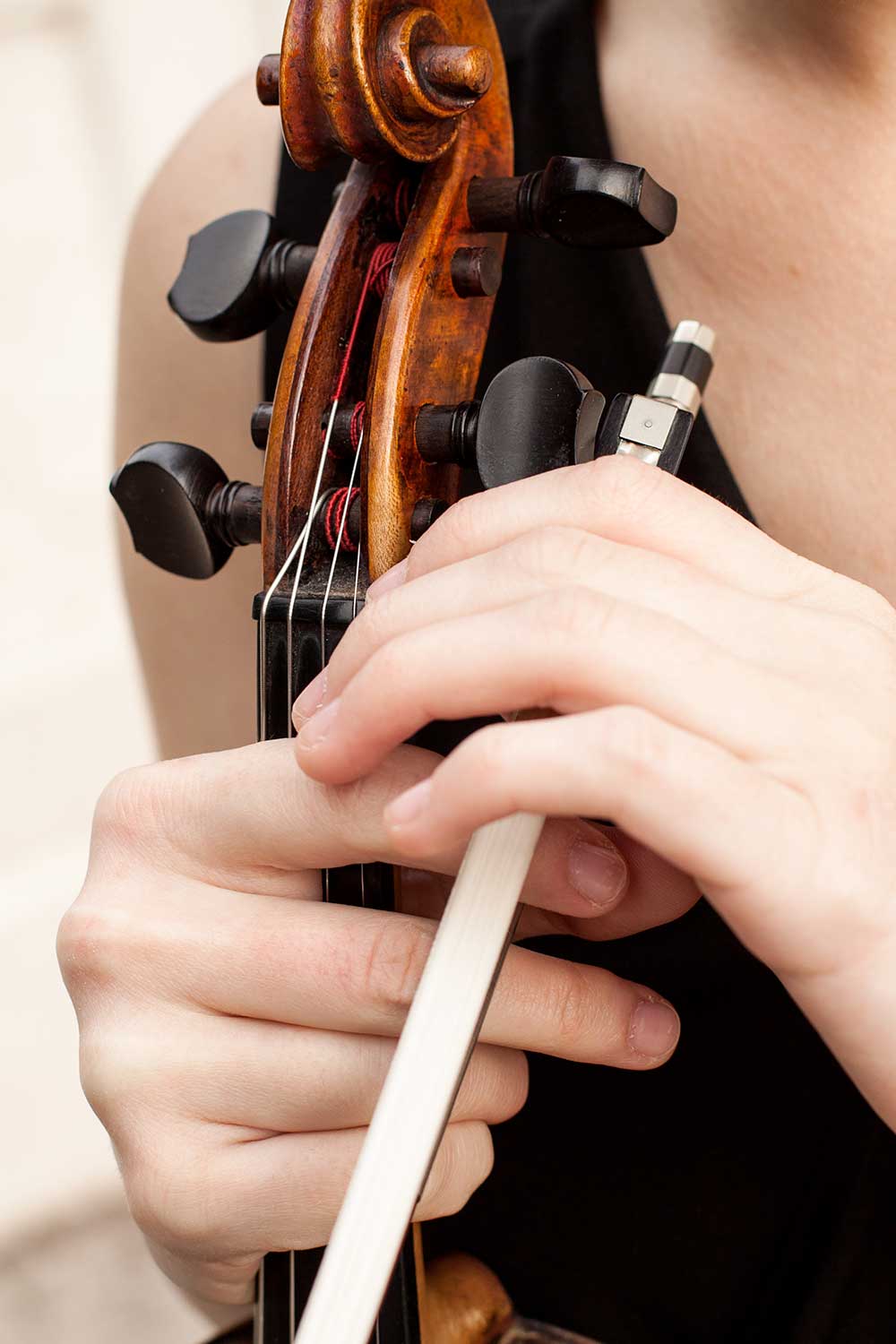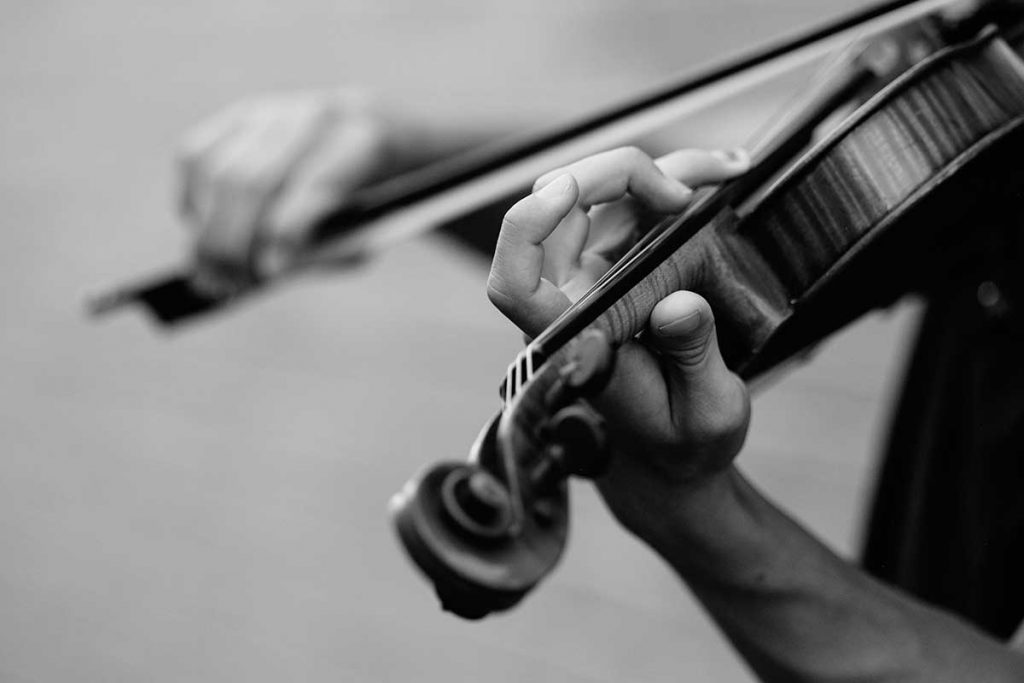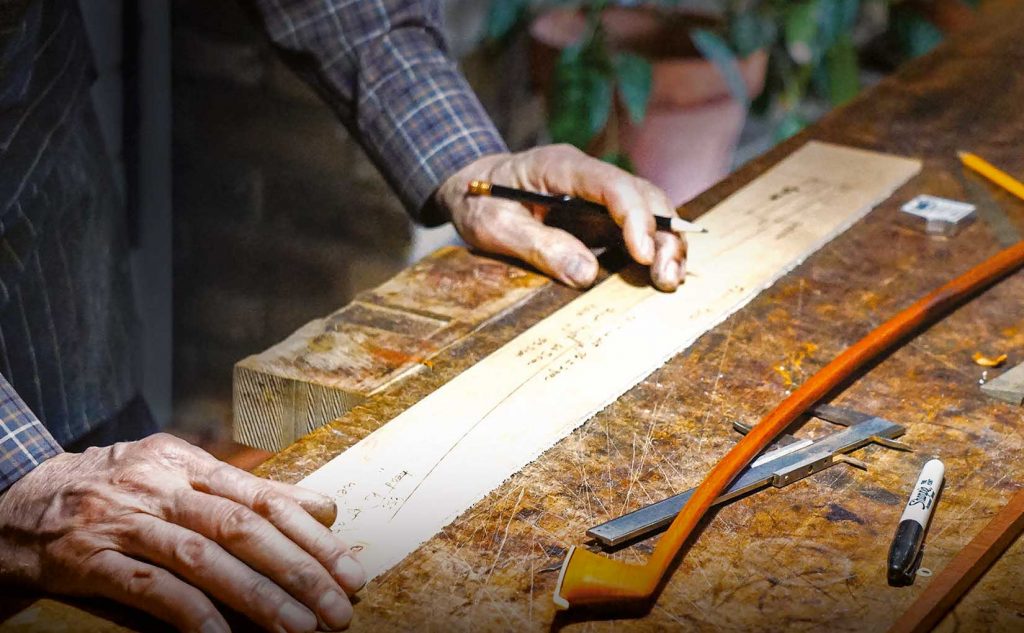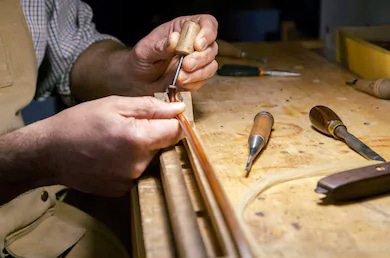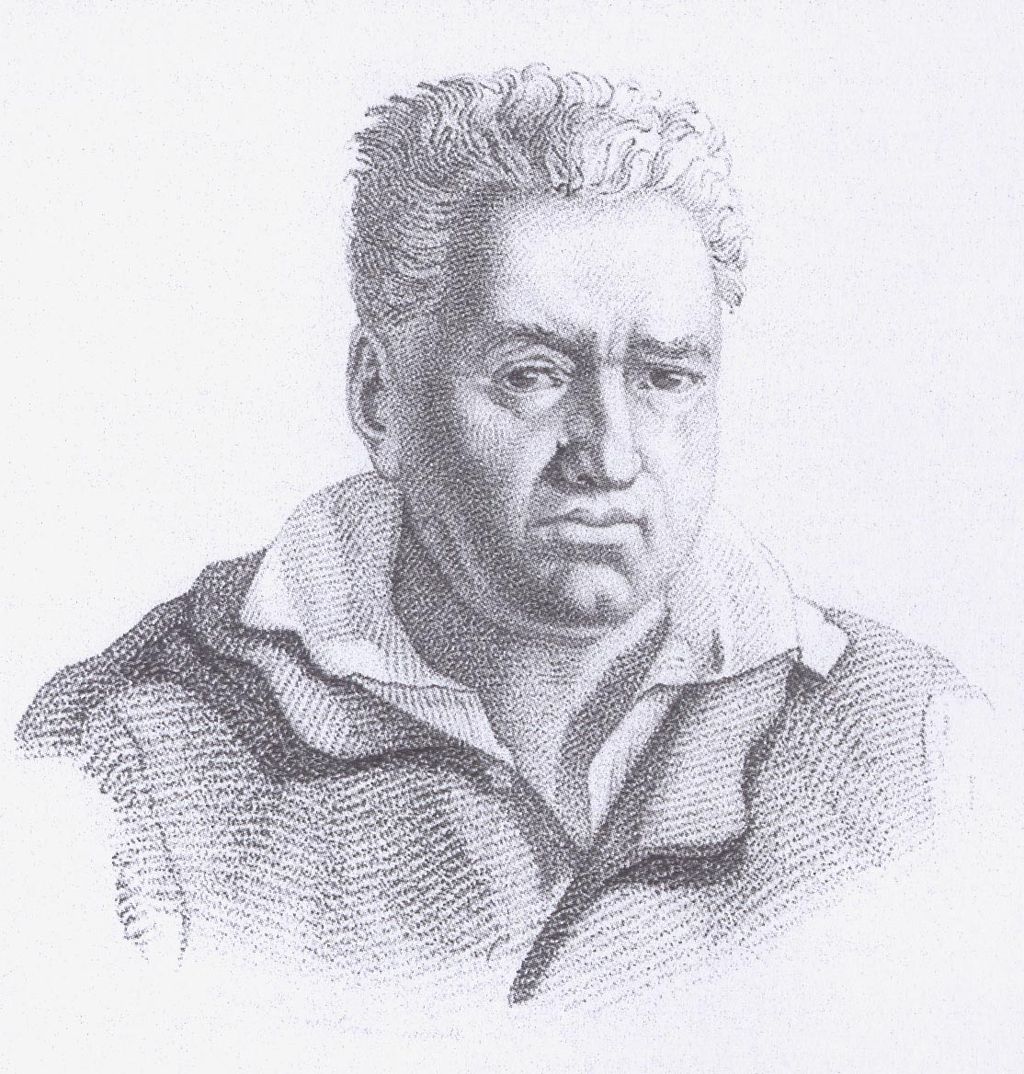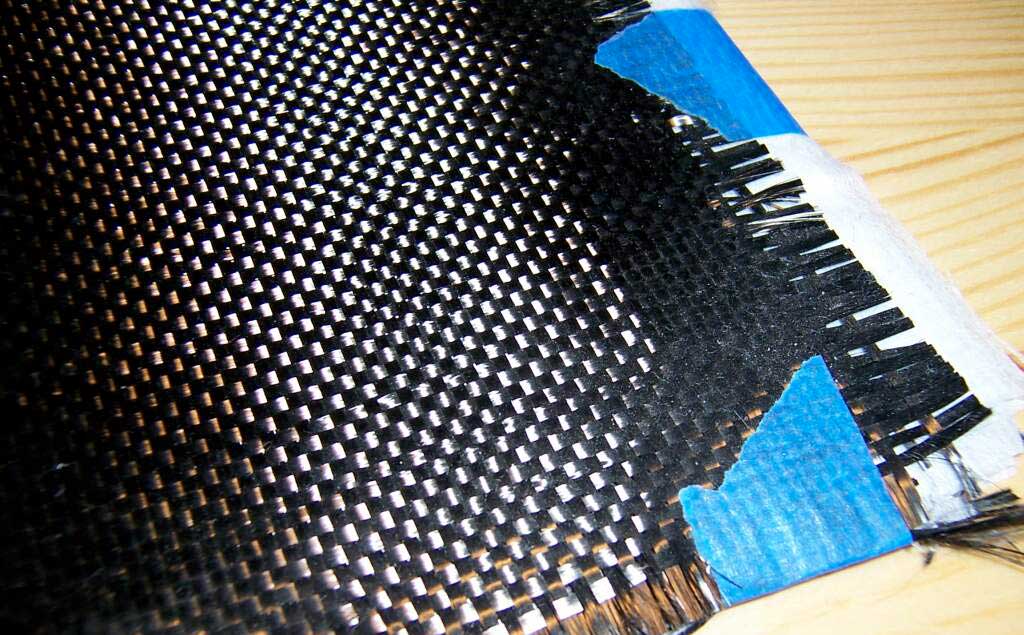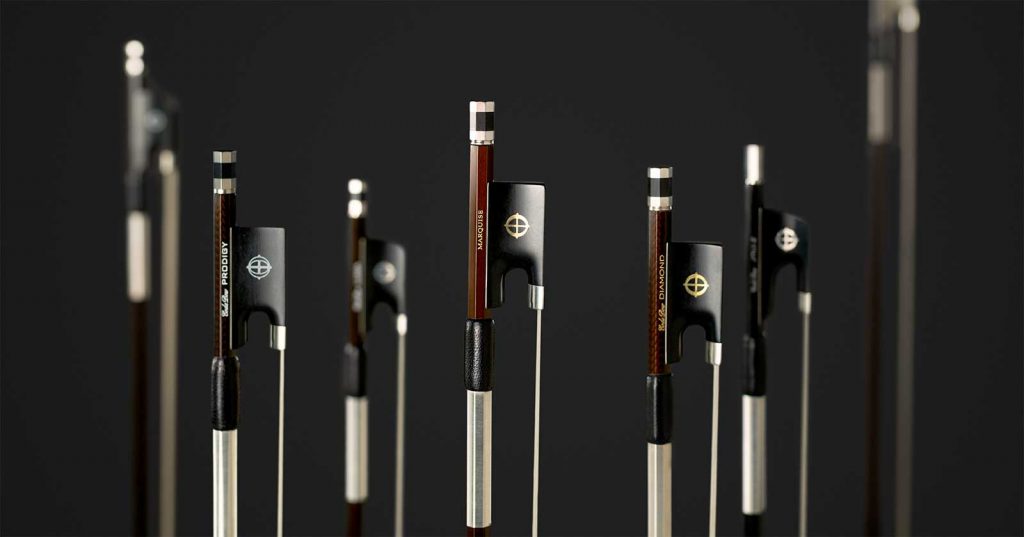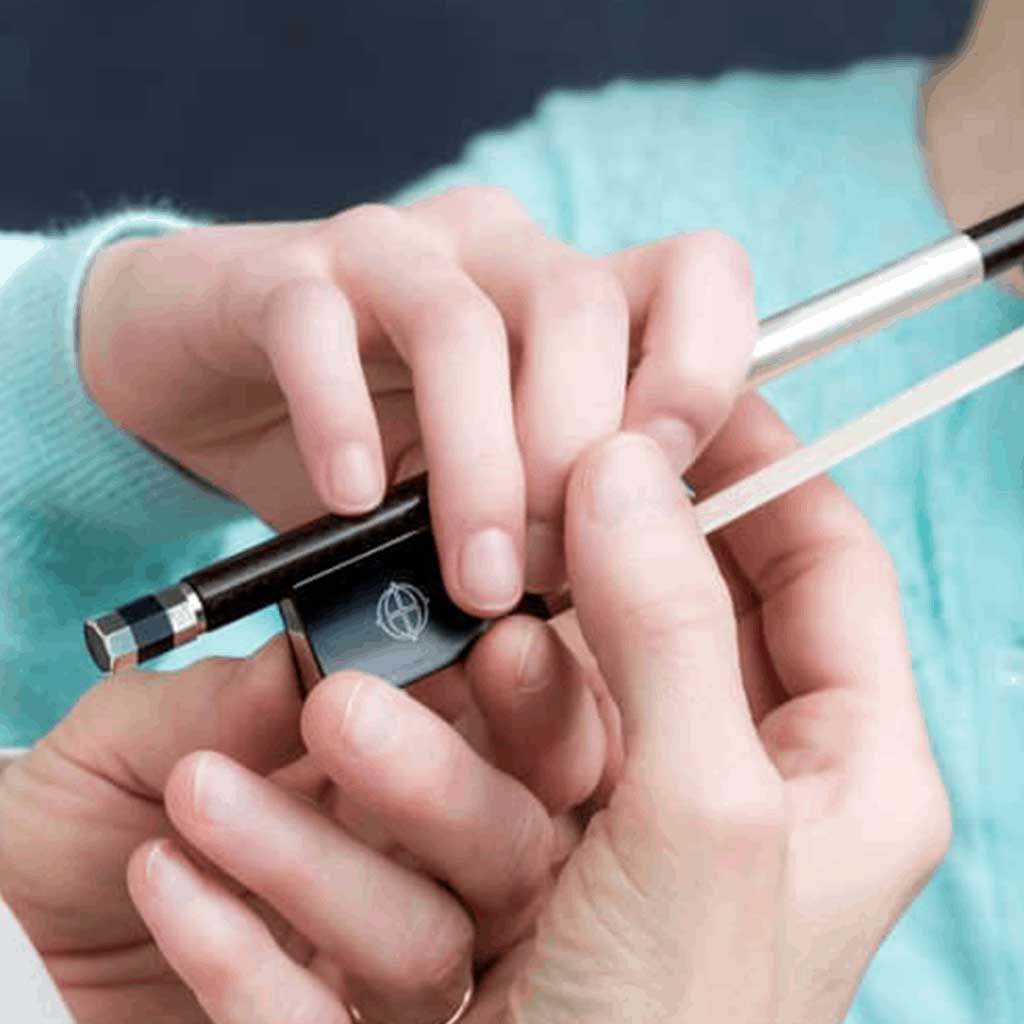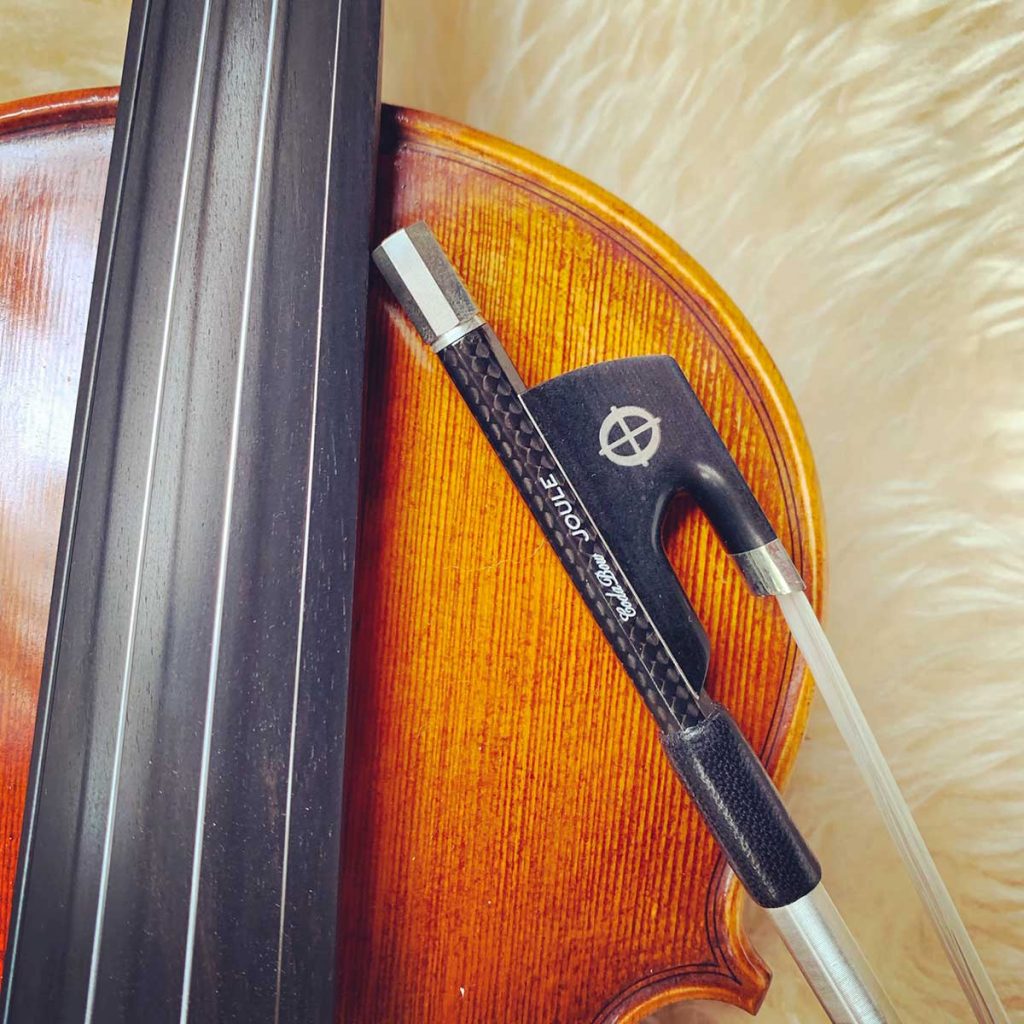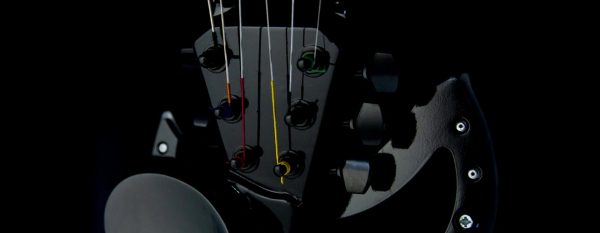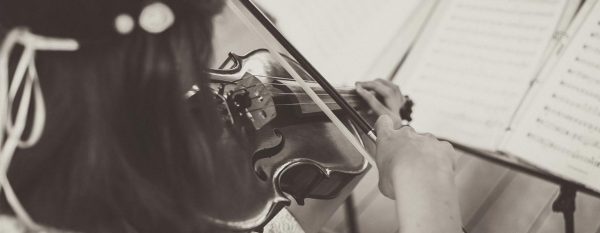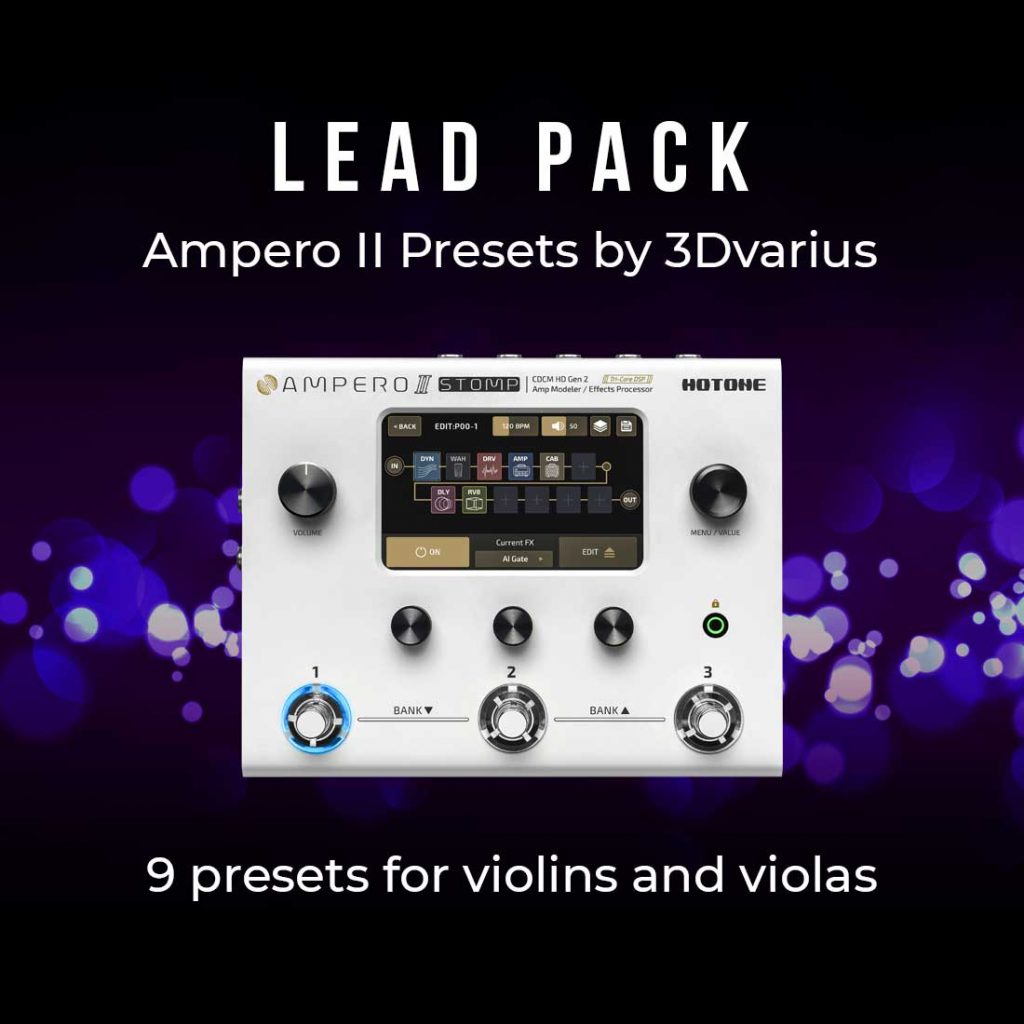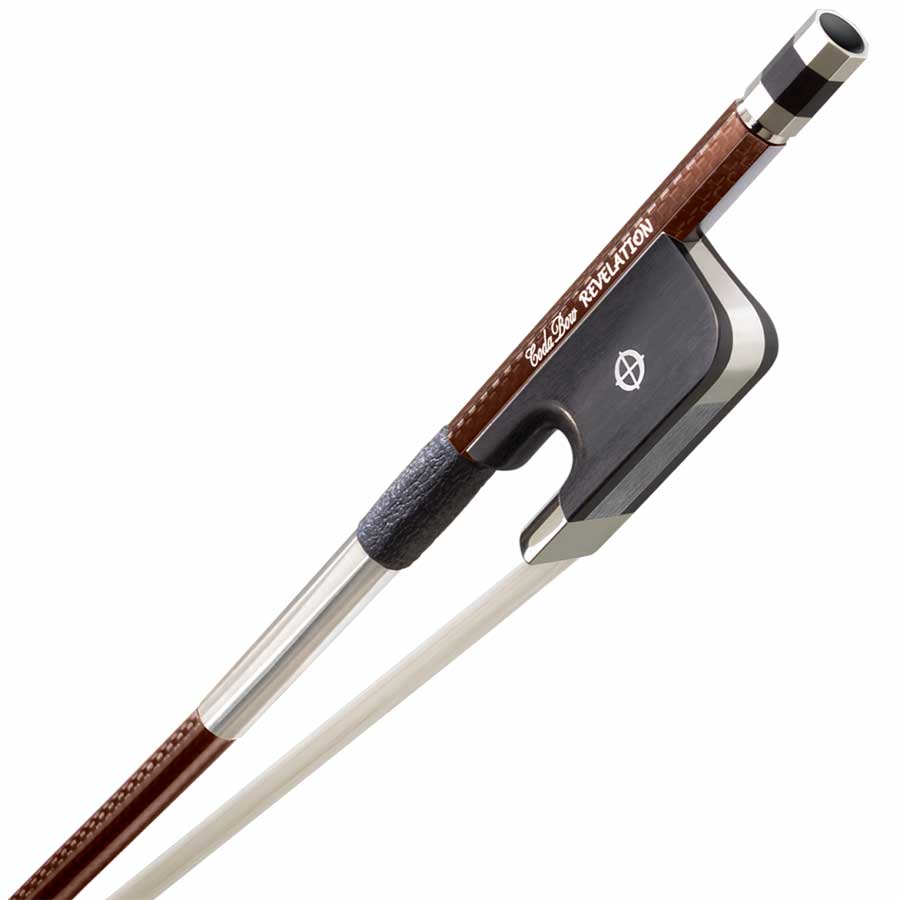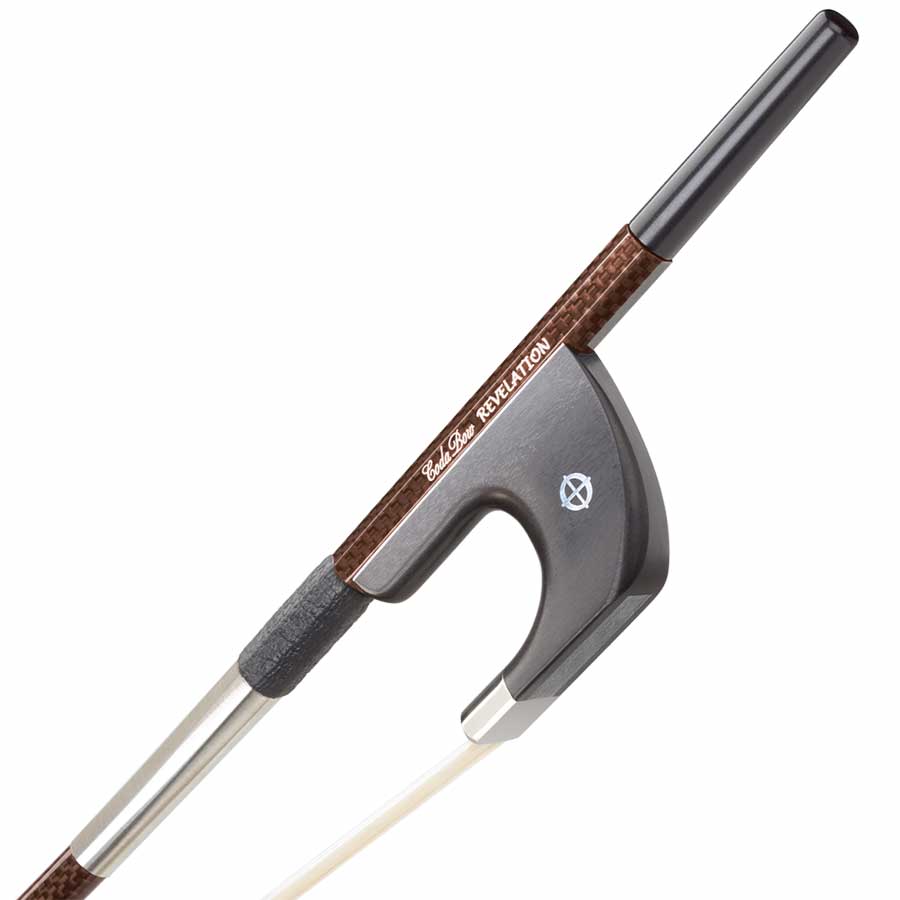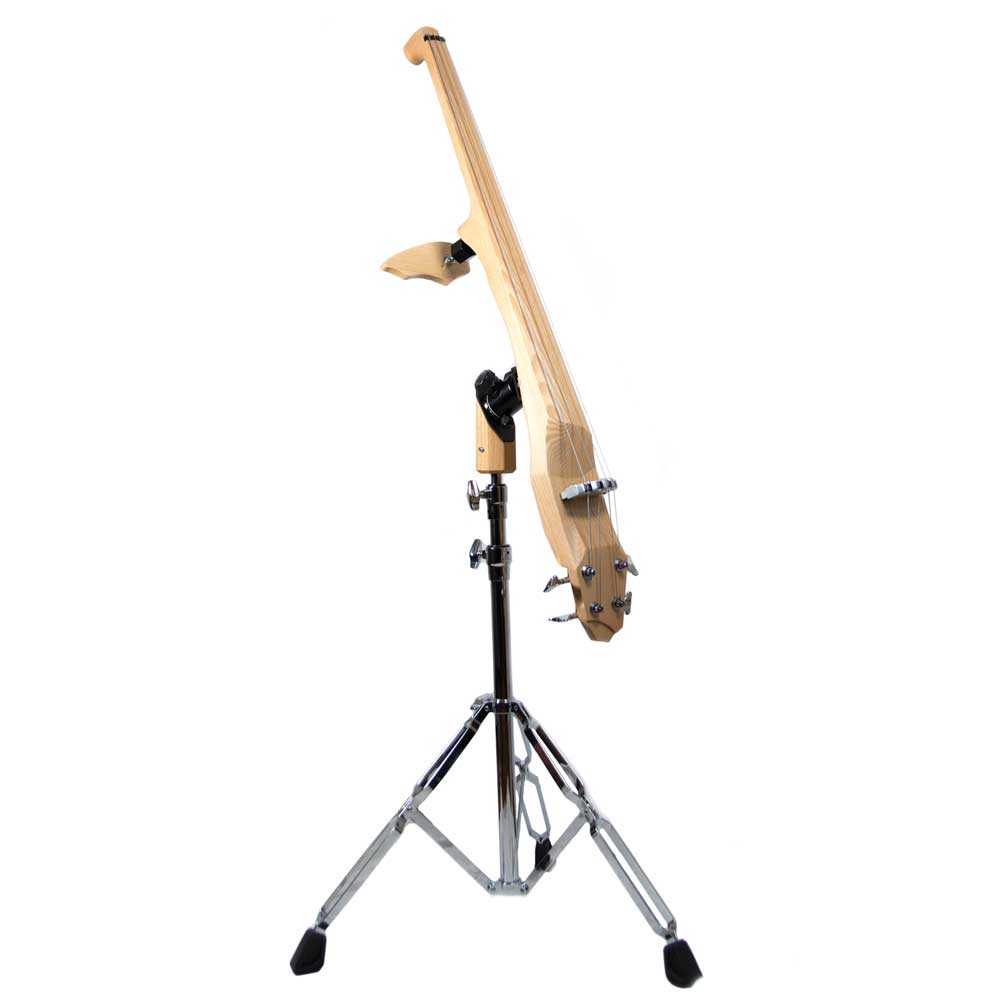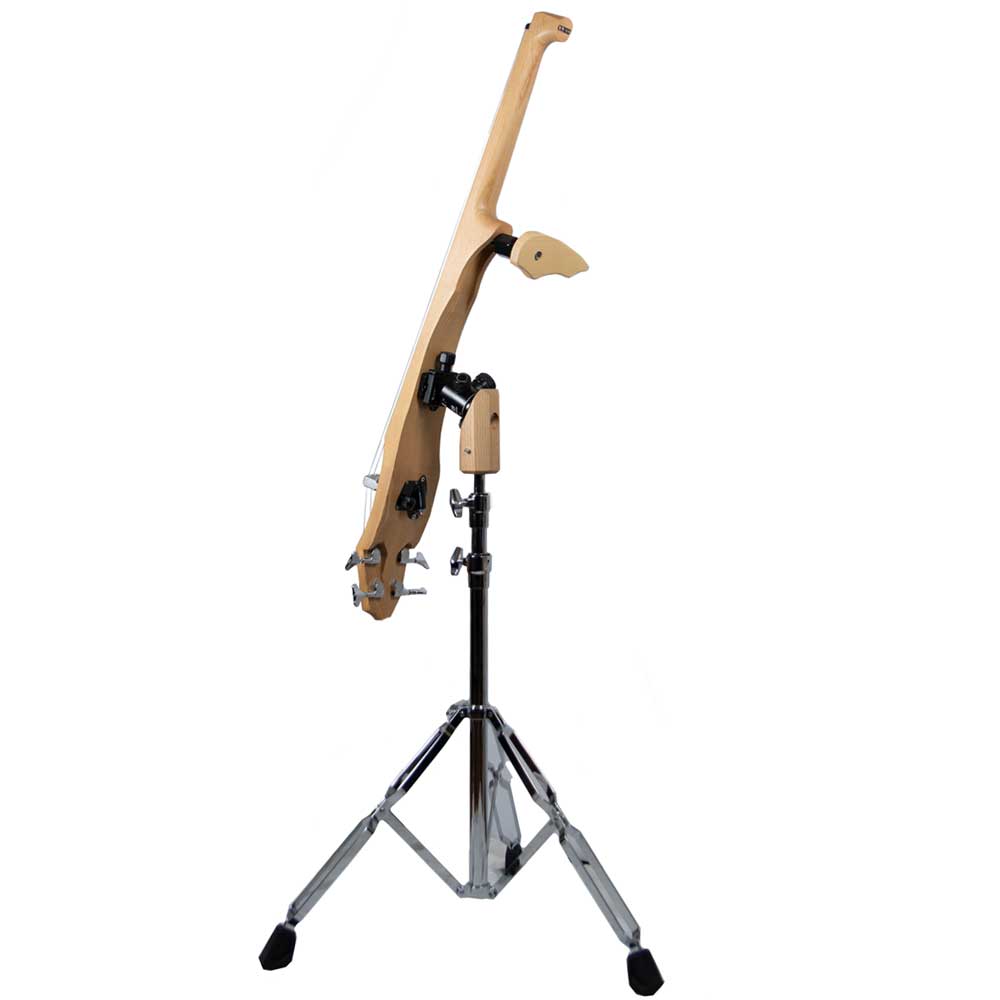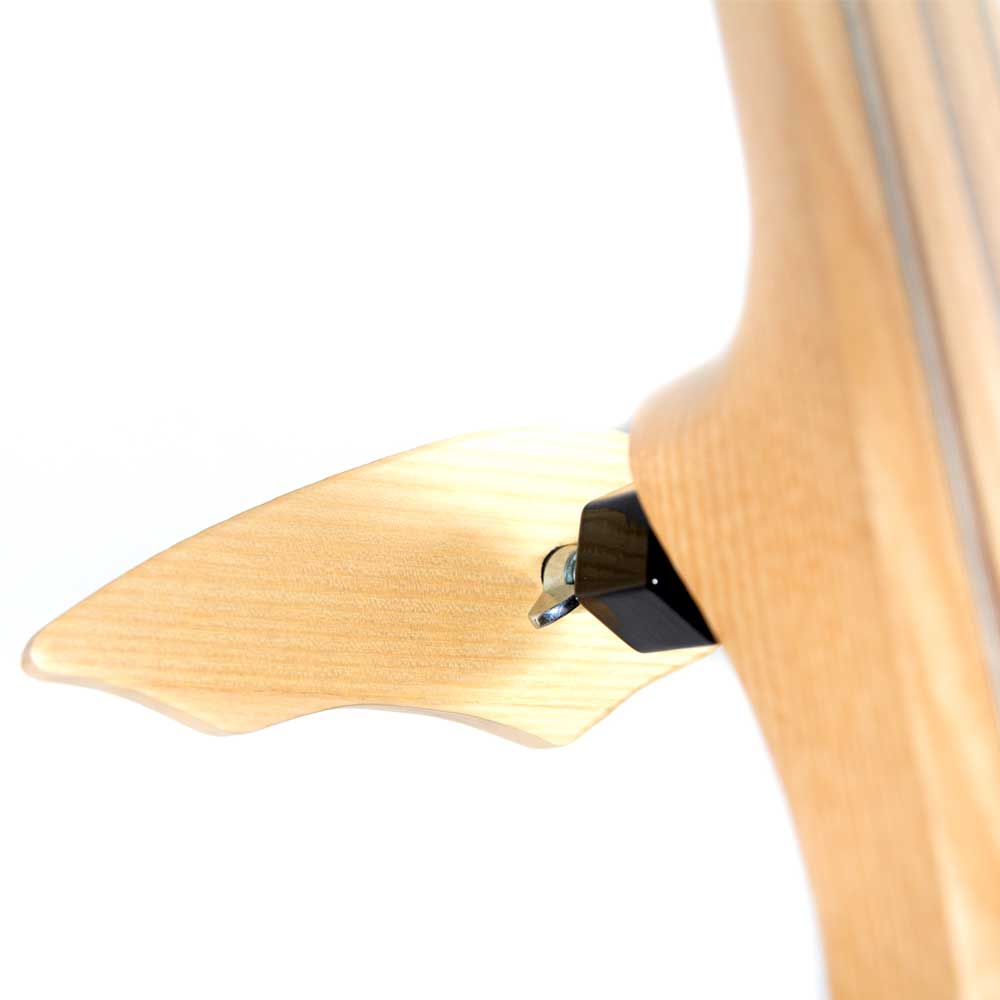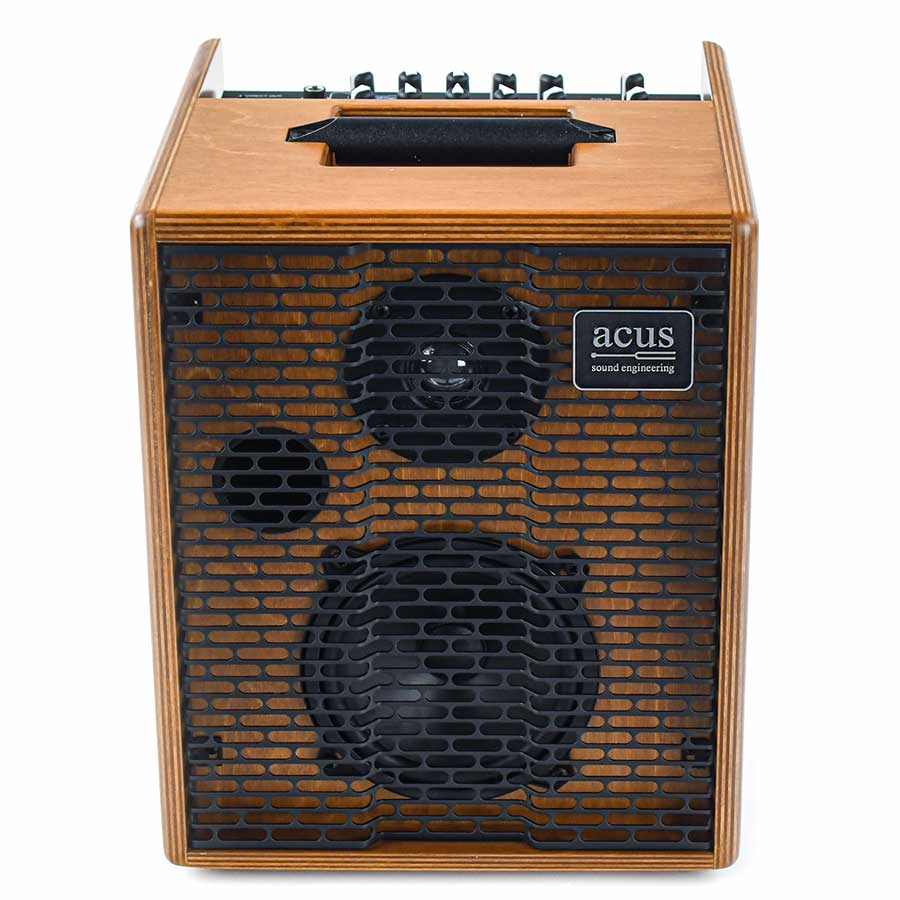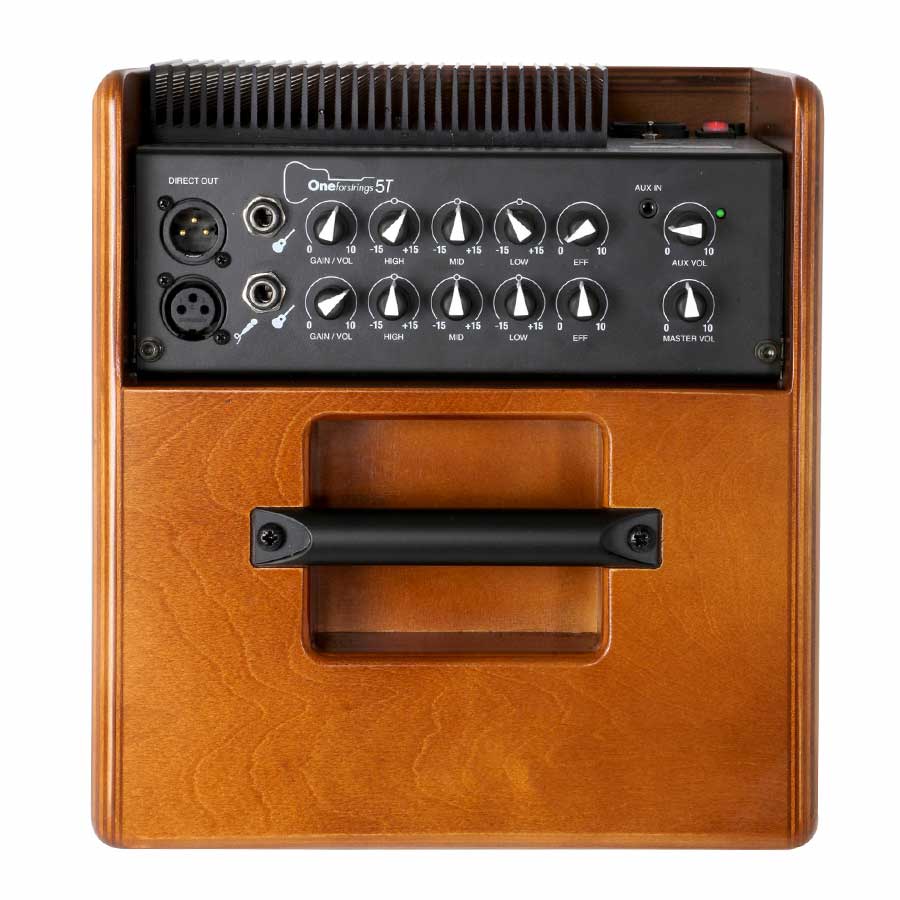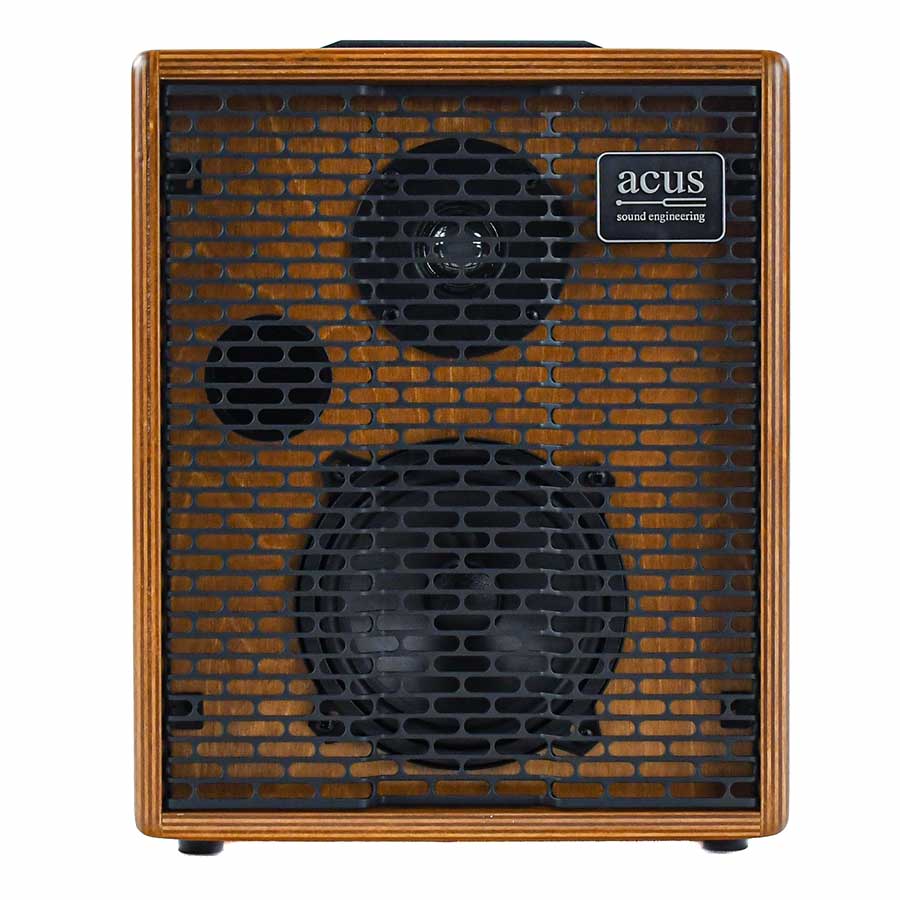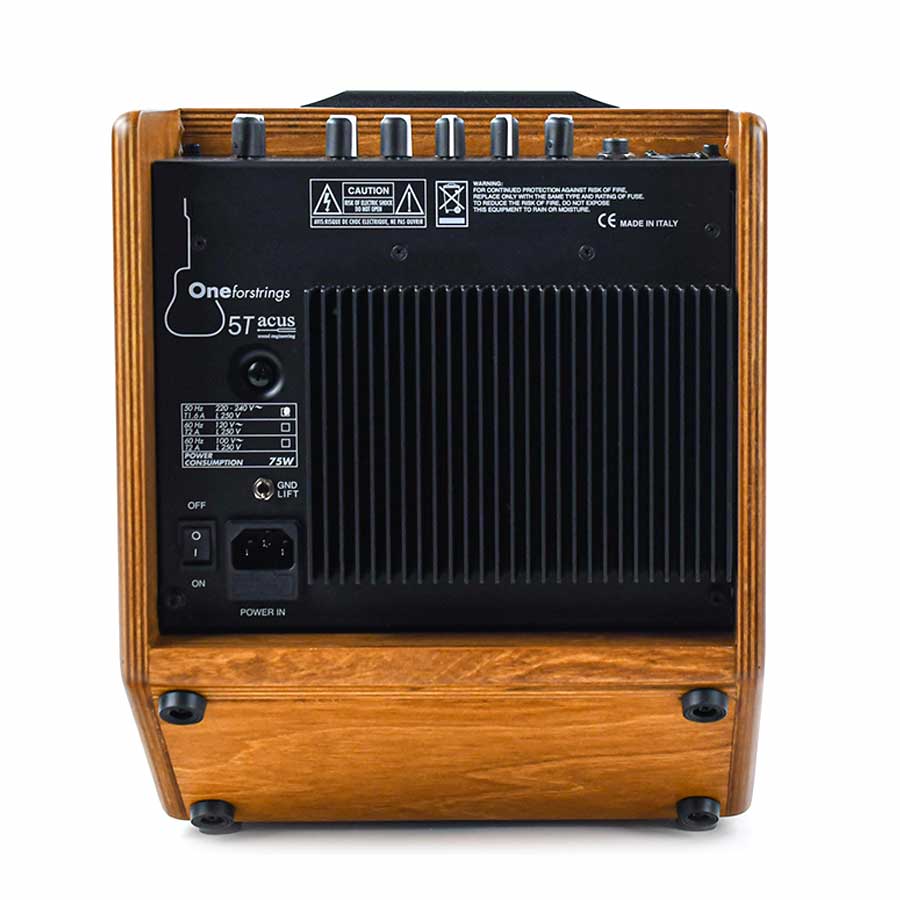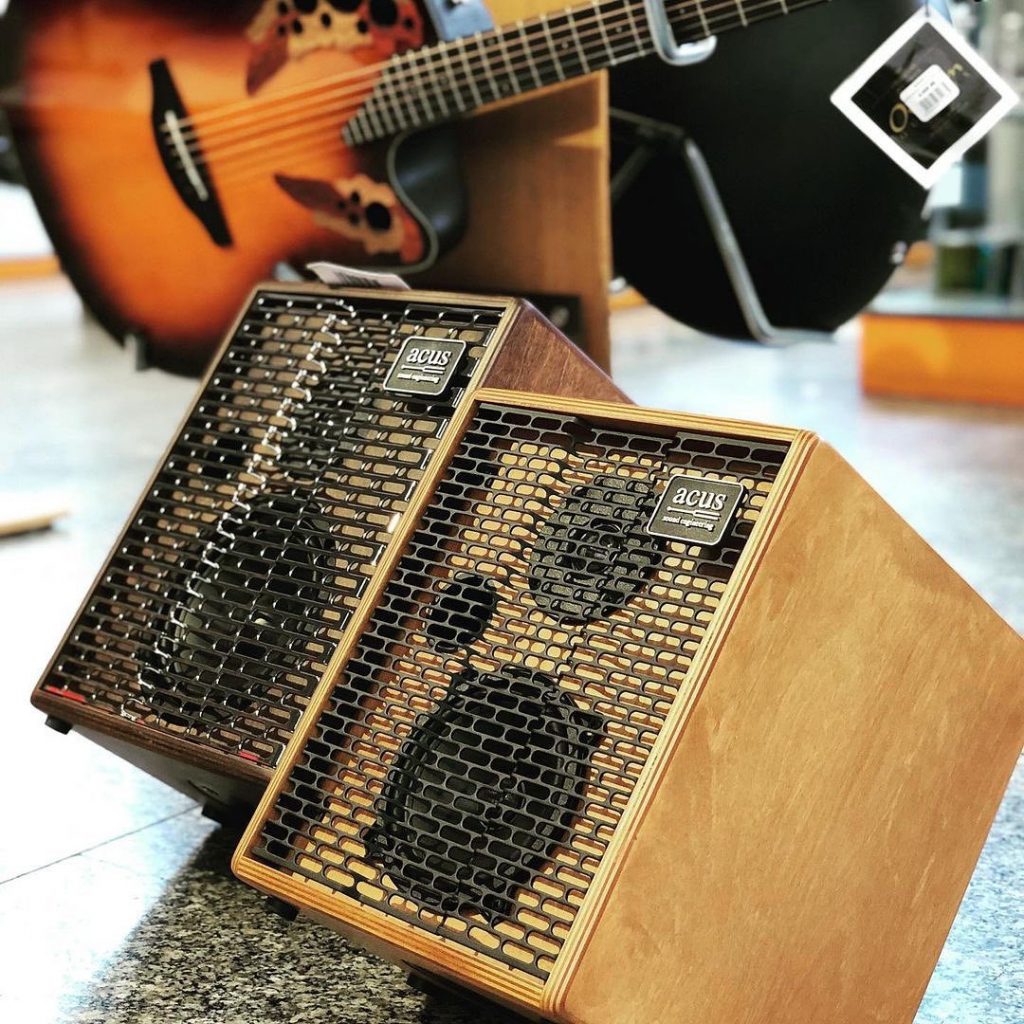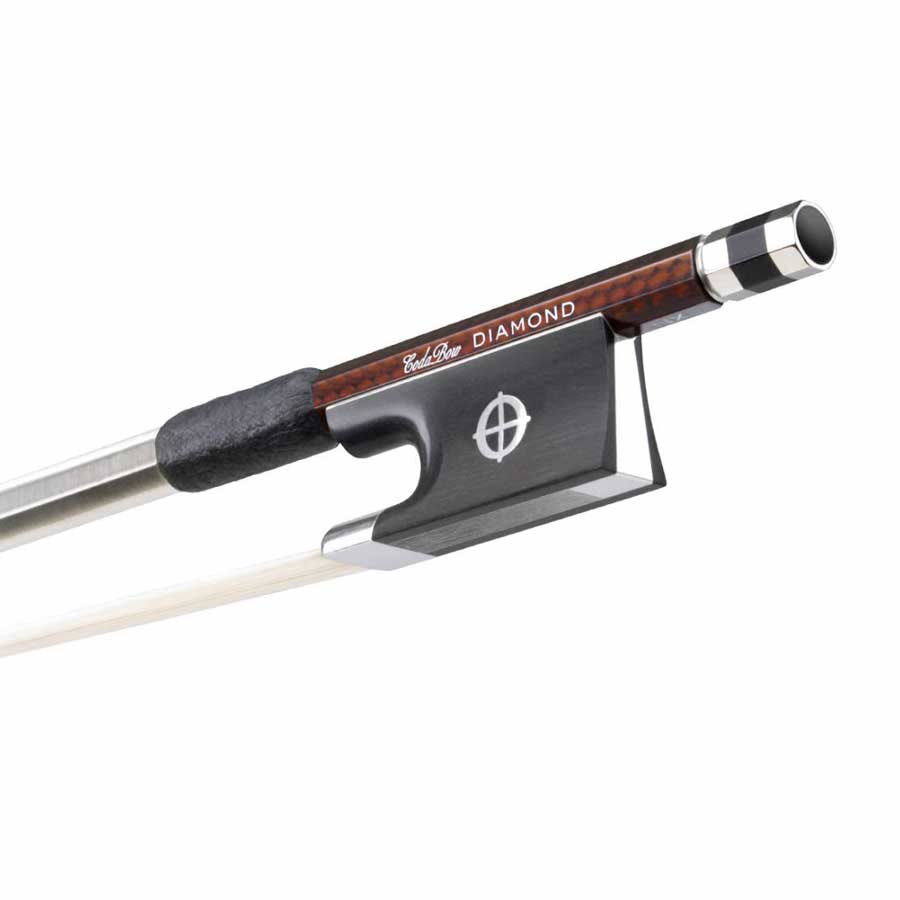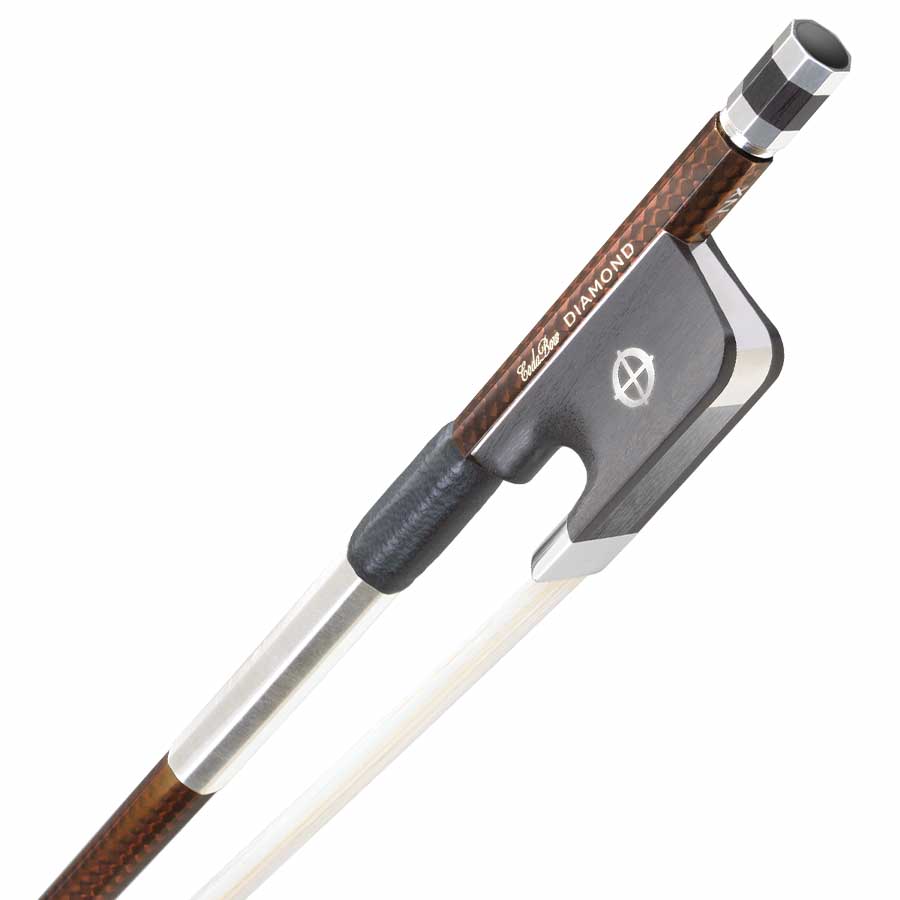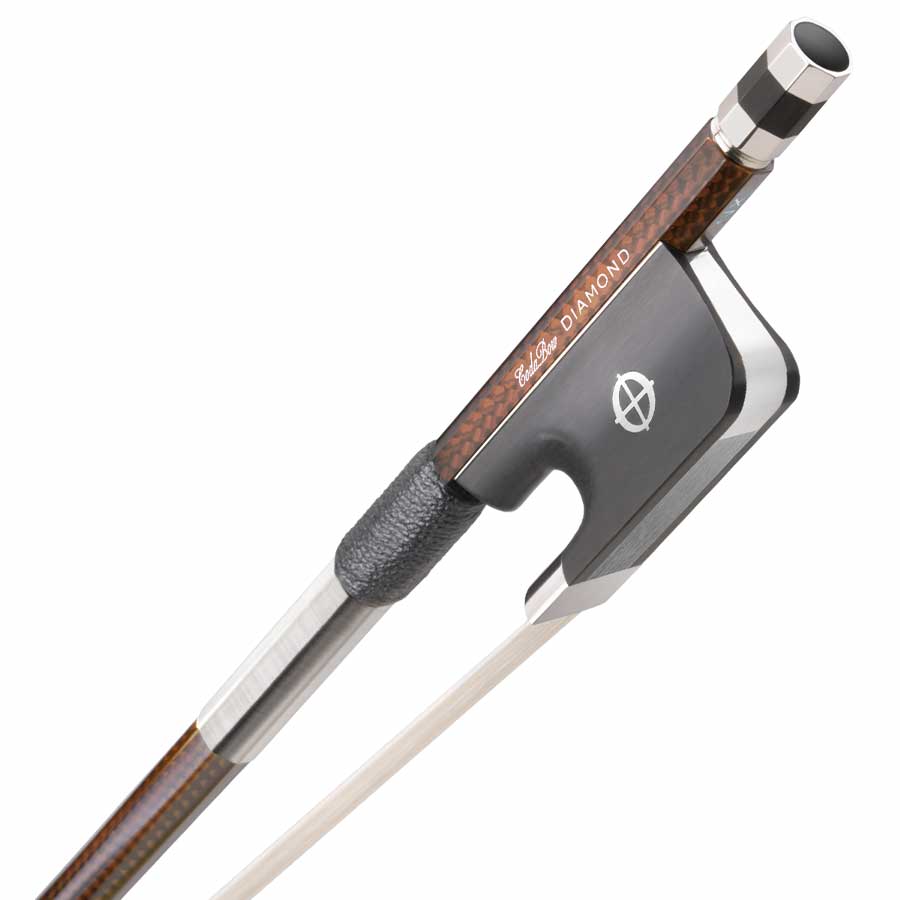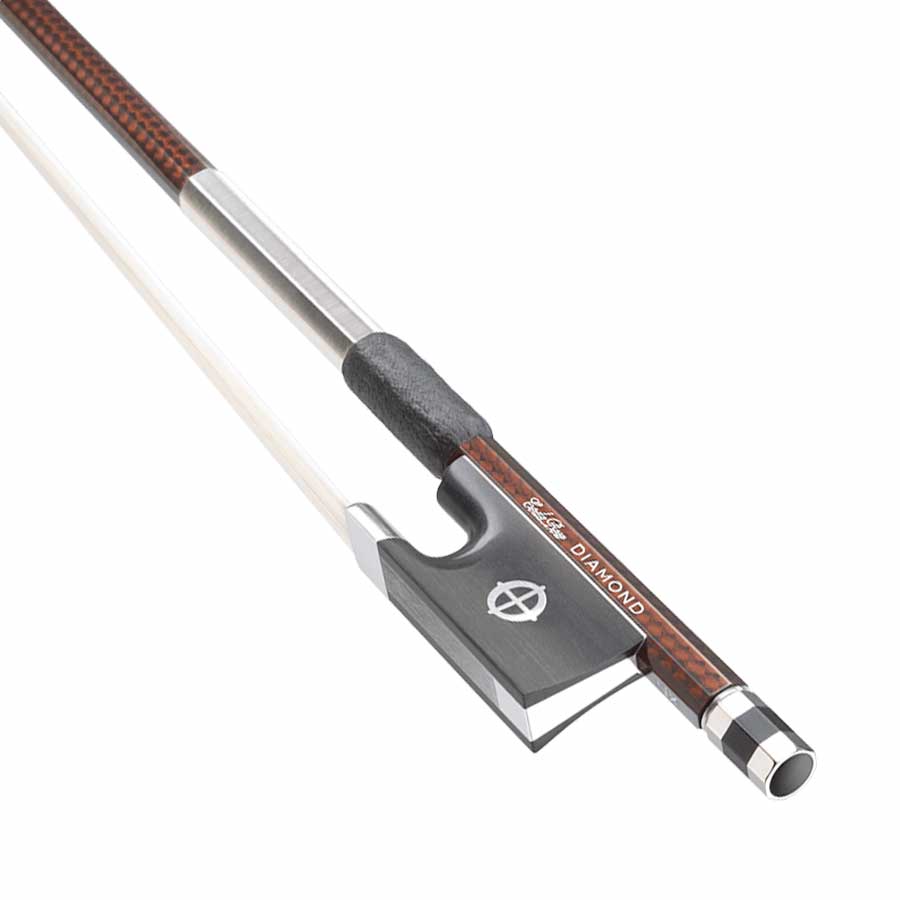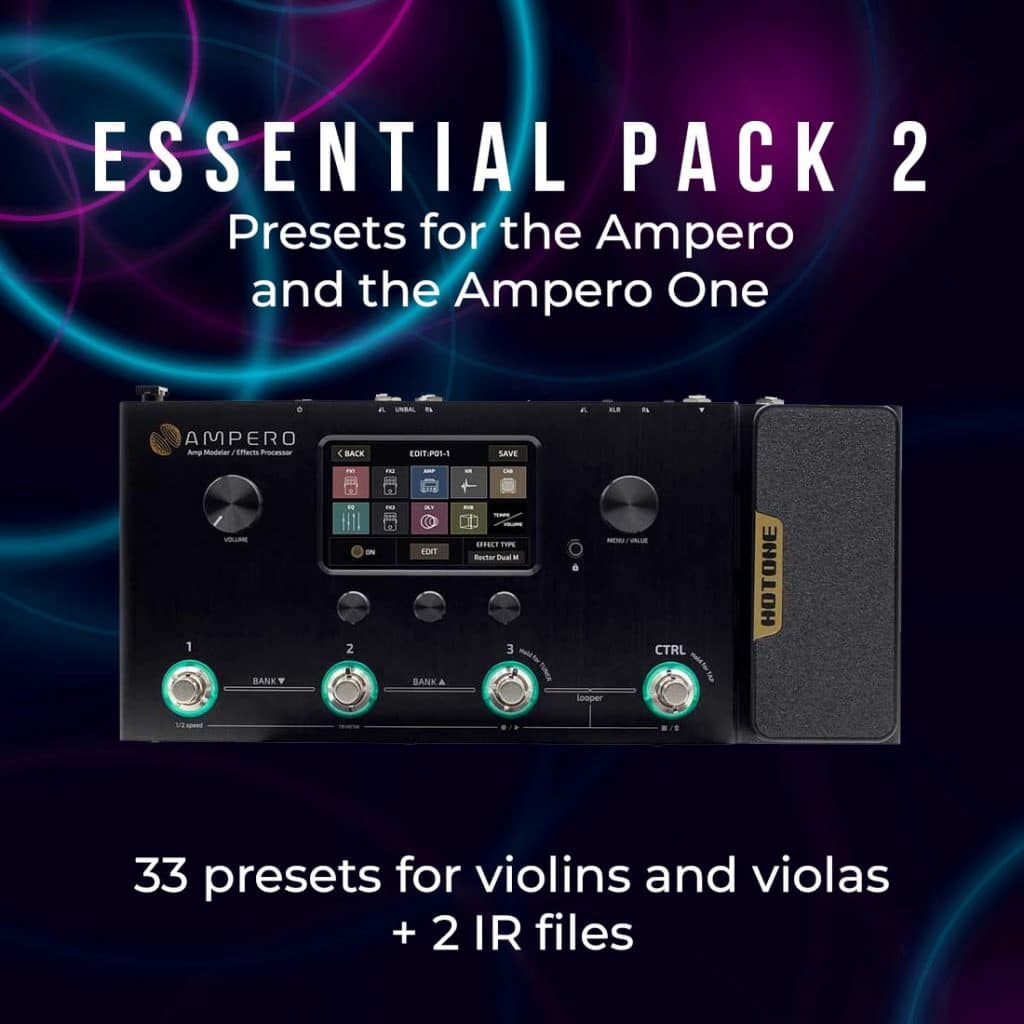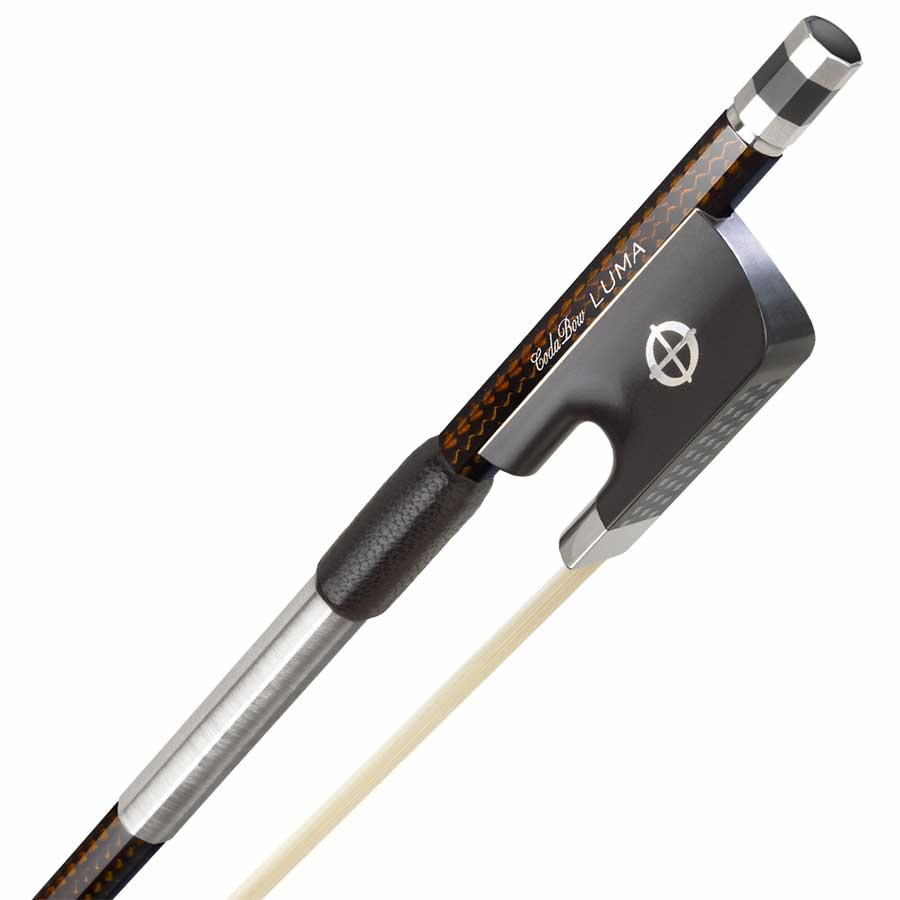This is a question that is frequently asked by violinists who want to choose their first bow for their classical or electric instrument (violin, viola, cello or upright bass), or who want to upgrade their instrument by investing in a new bow.
How to choose your first bow? What are the main characteristics you should consider when buying a bow? What separates a good bow from a bad one? Here are some basic things you should understand and analyze before choosing a bow.
What is a good bow?
Ask any violinist, violist or cellist, and they will tell you that a good bow is something that supersedes you. Something that you hold in your hand, but that should be part of you. It must become an extension of your arm and be completely forgotten while playing. The bow is there, but it must be “invisible” to the player who is using it.
Choosing a bow is, first of all, a matter of personal preference. You can try 10 bows, and the one you choose will depend on the sensation and the style you play. If another musician tries the same bows at the same time as you, he will certainly not have the same impressions as you.
Note that first impressions are always difficult to evaluate. When trying bows, it is often difficult to determine the real differences between them. We play them one after the other… As a result, our sensations are confused and conflicted with each other. It is obvious that you will not have any genuine certainty the day you try them out.
However, a whole bunch of characteristics should be considered, such as balance, weight, quality of the hair, the effort required to handle it, the curve and flexibility of the stick, stability and durability over time, etc.
Assessing your level
Before analyzing the characteristics, it is essential to know where you stand as far as learning the violin or the cello is concerned. Have you mastered every bow movement? Or are you in a conservatory learning new techniques every week?
If you are just beginning to learn how to play your instrument, a basic bow will meet your needs. You will not have any particular expectations from the bow because the first improvements will involve the dexterity of your hands, the way you hold the bow in your hand and the mastery of the primary movements. At this point, you don’t really need a high-end bow.
Of course, there are still some important points worth keeping in mind. As a beginner, it is best to choose a bow with a balanced weight and a fairly firm stick.
As you progress, you will require more and more from your instrument and the bow. We will explain each of these points in detail throughout this article.
What are the characteristics you should evaluate when choosing a bow?
When choosing a bow, the violinist’s, violist’s or any other player’s feeling will be based on several aspects:
- The sound produced
- Its maneuverability
- Its weight and balance
- Its stiffness vs its flexibility
- Its manufacturing material
These characteristics do not allow us to define THE IDEAL BOW. In fact, it is very difficult to meet all your needs with only one bow. The choice depends mostly on you: your way of playing and your preferences in terms of responsiveness and sound. A bow that is praised by one violinist may not be favored by another violinist. Don’t forget that the main person who will use it is you. You should therefore only take your own feeling into account!
The sound produced by the bow
This is an obvious characteristic for any instrumentalist. As with the selection of any musical instrument, the first thing that is evaluated is the sound.
However, a lot of beginner violinists may have a hard time perceiving the sound distinctions between different bows because they lack mastery. Once you reach a certain skill level on the violin, you will discover the importance of bows and their ability to generate different sounds. In fact, the characteristics of the bow will alter the sound that is produced. The distribution of its weight will change the response of the strings when bowing. The flexibility of the stick will also affect the sound and its responsiveness. The sound produced must correlate with the following characteristics.
Maneuverability
The maneuverability of the bow is a key factor, probably the most important. It defines the relationship between the player and the bow. It is determined by the camber of the stick. The camber is one of the steps involved in the making of a bow. It consists in providing the stick with a desired bending pattern.
Too much or too little camber will cause difficulties when controlling the bow. It can, for example, tilt weirdly to the side when up-bowing. Remember that very often a bad camber will force the player to over tension the bow.
Accurately handling a bow is a complicated thing to do when you are just starting out! If it is not an easy task to use the bow, it will not be easy to identify the differences between each bow when executing specific movements (martelé, staccato, sautillé , spiccato, etc).
The main difficulty for a new violist, cellist or violinist is to learn how to control the limbs of his body to achieve beautiful bowing movements.
The bow you choose will also depend on your ability to use it. If you don’t master the spiccato, it will be difficult to try out bows that are more appropriate for this type of movement. Which is why we always take into account the skill level of the player before selecting a bow. We will discuss this a little later by giving examples of bows designed to meet the needs of instrumentalists according to their skill level and the following stages of their learning process.
The weight and its distribution
The weight of the bow plays a role in the maneuverability for the instrumentalist. Try to play a few hours with a 100g bow… We guarantee that you will have muscle soreness in your arm! 🙂 Of course, we are exaggerating on the weight!
Typically, a wooden violin bow weighs about 60 grams, a viola bow weighs about 70 grams, a cello bow weighs approximately 80 grams and a double bass bow has an approximate weight of 135 grams. These weights can vary between 1 and 3 grams at the most. All bows respect these reference weights which have now become standards. It is important to respect them, because the accuracy of the weight is partly responsible for the pressure on the strings. If a bow is too heavy or too light, it will not produce an interesting sound.
Weight distribution is another key point. It must be balanced from tip to tail for a good grip. A good balance is essential for a good playing comfort. If, for example, the weight is too important at the tip, the bow will tend to tilt too quickly and will demand extra effort from the player.
Stiffness VS Flexibility
The stiffness or flexibility of the bow determines its ability to resist or facilitate the movements of the player. This characteristic can also be associated with the effort required by the player to use the bow.
The stiffer the bow, the more stable and easier it is to play. However, it will be less suitable for creating nuances of sound.
The more flexible a bow is, the more skill it requires on the part of the player to handle it, and the more it will allow for a wider range of sound possibilities.
This characteristic can also be connected to specific playing features. In fact, a rather stiff stick will allow for a greater tension of the hair. The tighter the hair, the greater the possibility for bounce movements, but the less the friction on the strings can be nuanced.
On the other hand, a softer stick will result in lower hair tension, which will increase the possibilities of applying pressure on the strings and thus broaden the range of possible sounds.
Why do you need to adapt your classical violin bowing technique when playing an electric violin?
The manufacturing material
Nowadays, bow makers use 2 materials to make bows: wood and carbon fiber. The manufacturing material plays an important part in determining the final price of the bow.
Wooden bows
The Brazilwood designation (Brazilian wood)
These bows are collectively known as Brazilwood. This is actually a generic term that refers to a vast variety of tropical woods that are used for entry level bows. The term doesn’t refer to an official designation, and not all of these bows are made in Brazil. Many of them are made in other countries. These are the bows that you will usually find in major music stores. They will meet the needs of any beginner or intermediate violinist.
However, be careful with low-priced bows… It is certainly better to try them out! Some of them are unusable or quickly become so: overly pronounced curves, changes and degradation of the stick over time, strong reaction to weather conditions, excessive fragility, poor balance, etc.
The pernambuco
Native to Brazil, pernambuco is the reference wood for all wooden bows. It is preferred by almost all bow makers and great instrumentalists. In fact, pernambuco wood has the ideal characteristics for bows. It is sufficiently dense and yet has excellent strength and flexibility. There are many subspecies of pernambuco and therefore significant differences in terms of quality.
Unfortunately, its extensive exploitation has made it a rare wood. Nowadays, it is a species protected by international conventions. The Brazilian government has implemented severe restrictions on its export. Pernambuco has become a rare gem.
Pernambuco bows are usually found in the hands of bow makers and violin makers. Their price will vary widely depending on the overall quality of the product and the reputation of the designer. You will find them ranging from 500 € to thousands of euros.
Why pernambuco?
Almost every modern bow is based on the work of French bow maker François Xavier Tourte, nicknamed the “Stradivarius of the bow”. It was in the 18th century that this Frenchman aimed to revolutionize the manufacture of bows.
Having started out as a watchmaker, he spent much of his life experimenting with wood, shapes, weights, hair, and much more to achieve the perfect bow. He was responsible for the adoption of pernambuco wood among bow makers. His research proves that the characteristics of pernambuco allow for the best possible quality in a bow. He also worked a lot on the ideal amount of curve of the stick and on the distribution of its weight from the screw to the tip.
His work is still a reference today. François Xavier Tourte has left his mark on the history of the bow. His bows are highly sought after by the most renowned instrumentalists. Like the Stradivarius, they are a valuable investment!
How are traditional wooden bows made?
Traditional wooden bows are made by hand. Their design requires great care and precision. From the selection of the wood to the camber of the stick, it takes dozens of hours to make a bow.
If you are interested in discovering the craftsmanship of a bow maker and his complete work during the making of a bow, we invite you to watch the following video which shows the work of Roch Petitdemange.
Carbon fiber bows
Due to the scarcity of pernambuco, it was essential to find new materials capable of meeting the needs of bow makers and string players.
Carbon fiber bows were introduced to the market about 40 years ago. They are an “eco-friendly initiative” taken by many companies and bow makers who wanted to find an alternative to pernambuco. Numerous studies on this synthetic material have allowed us to obtain characteristics that are almost equivalent to those offered by pernambuco. Because of this, we can find today a large number of bows made out of carbon fiber.
What is carbon fiber?
Everyone has heard of carbon fiber objects, which are said to be lighter and stronger.
Carbon fiber is obtained by assembling thousands of carbon fiber threads woven together in a very specific direction. Individually, each thread is very brittle. But once they have been woven together, they become very strong.
The result of this weaving is a kind of carbon fiber fabric. It is then necessary to transform it into an adjustable material.
To do this, it needs to be combined with resin to form a composite, also known as a carbon fiber polymer. Next, the composite is shaped into objects using molds. After drying, we obtain a rigid material with an unparalleled strength to weight ratio!
Carbon fiber bows have the advantage of being long-lasting, strong and stable. A carbon fiber bow is difficult to bend, it does not break easily and, above all, it does not react at all to humidity and temperature changes.
We stand behind these claims! We use carbon fiber bows for all our events, they are used by beginners and professionals alike, sometimes even by non-violinists, they frequently touch the ground, are used by inexperienced musicians and fly as often as we do. And apart from repeated rehairing, they are always in perfect condition and show no signs of wear!
All professional violinists travel with several bows and many of them also carry a carbon fiber bow that can withstand extreme weather conditions.
These bows are suitable for all budgets; they are available at all prices. However, prices are related to the quality of the bow. Lower priced carbon fiber bows will work well for beginners. Unfortunately, their weight is sometimes significant, they often lack balance and are sometimes a little too rigid. More expensive carbon fiber bows are designed to meet the needs of musicians at a specific time in their learning process or career.
Matching the material to level and performance
The main advantage of carbon fiber is that it allows to adjust the weight and its distribution, according to the stiffness/flexibility factor.
This means that it is ideal for designing bows that are suitable for beginners, intermediate and professional players, or bows that are suitable for a particular musical style (folk, classical, rock, etc.)
As mentioned above, choosing a bow depends greatly on your ability to handle it and your technique. Carbon fiber bow manufacturers have therefore designed bows to meet the needs of each player at a specific time in their learning process.
By studying the educational standards of conservatories and music academies, and in partnership with teachers, they have designed bows to suit every level.
So, if you are a beginner on the violin, your first bow movements will be legato, détaché and staccato. The weight distribution and stiffness of these beginner bows are suitable for these kinds of movements. Afterwards, you can switch to a new bow that suits your level of progress.
These manufacturers also offer bows for classical players with a high degree of flexibility, or for styles requiring more percussion and bounce with a stiffer stick.
The example of CodaBow
CodaBow is an American manufacturer specializing in carbon fiber bows. It proposes about fifteen ranges of violin, viola and cello bows. Each of them addresses a specific need for instrumentalists. They follow a technical progression in terms of bowing movements, nuances, arm gestures, etc. Up to a professional level that will influence the choice of the bow according to the musician’s preferences and playing style.
For example, CodaBow designed the Joule bow specifically for electric violinists. A lot of musicians have adopted it, including Jonathan H. Warren and Matt Bell!
The Joule has been designed to perfectly vibrate with all the strings of an electric violin which can have from 4 to 7 strings.
In fact, the lower the string, the larger diameter will be, and the more difficult it will be to make it vibrate and obtain a proper responsiveness. The Joule is slightly heavier to allow a greater pressure on the strings.
And the distribution of its weight is accentuated on the tip of the bow to obtain a better responsiveness on the lower strings. It is also stiffer in order to suit more rhythmic musical styles (rock, pop, etc.). You can watch below the Joule presentation by Jonathan H. Warren.
CodaBow bows are available in our store. They exist in versions suitable for violin, viola, cello and some are specific to double bass.
Our opinion between wooden bows and carbon fiber bows
Choosing a bow depends on the previous characteristics: produced sound, maneuverability, weight and manufacturing material. All of this must be compared with your personal feeling when you play. You should also take into account your level as an instrumentalist and your budget.
For carbon fiber bows
The positive
> Highly resistant
> Some manufacturers have taken into account the level of the musician and the playing style in order to propose specific bows
> Less maintenance (the camber of the stick changes less than on a wooden bow).
> Impervious to environmental factors (changes in temperature and humidity)
> Better value for money
The negative
> Be careful with the balance of the stick on the lower prices
> Some bow makers may refuse to rehair carbon fiber bows
> There is no concept of value over time for carbon fiber bows
> Less prestigious than a wooden bow
For wooden bows
The positive
> Handcrafted by a bow maker
> The prestige of a wooden bow
> A long term investment (the bow increases in value if its quality is recognized)
> Be careful with the lower prices which are often unusable (industrial manufacturing)
The negative
> More expensive than a carbon fiber bow for a similar quality
> Use of Pernambuco wood (protected and endangered)
> Very sensitive to environmental factors.
> Higher and more frequent maintenance required to be done by a bow maker (particularly, bow cambering)
> More fragile than a carbon fiber bow
Of course, the advantages and disadvantages listed above are to be correlated with your needs. As for us, we usually prefer carbon fiber bows for their good value for money and, above all, for their great durability, which is an essential feature when it comes to trying out our violins during events! However, Laurent Bernadac, our co-founder and violinist, never travels without his wooden bow. He also has a carbon fiber bow that follows him to every concert. Here is what we suggest depending on your level.
Beginner
Purchase an entry-level carbon fiber bow or rent a well-crafted wooden bow
Intermediate
Purchase a carbon fiber bow that matches the level of the musician or purchase a well-crafted wooden bow
Professional
Purchase a professional carbon fiber bow or a high-quality wooden bow
Do bows have a real impact when playing with an electric violin?
After all we’ve just said, the answer seems obvious, doesn’t it? But if you still have doubts, then let us shed some light on the subject!
If a bow is important when playing a classical violin, why shouldn’t it be important when playing an electric violin?
Of course, a bow will influence your playing style regardless of whether you play a classical or an electric violin. On the classical violin, the bow plays a slightly more important role, as it is the source of the responsiveness and sound power of your instrument. In the electric violin, the sound power is not related to the instrument, but to the volume setting on the amplifier.
However, each bow produces different sounds, even on an electric violin. Below, Matt Bell, electric violinist, playing a 5-string 3Dvarius with a carbon bow.
Try 10 different bows with your electric violin and analyze the sound spectrum. You will realize that they are not identical. As explained earlier, the characteristics of the bow will make the strings vibrate in different ways. However, the sound produced will be retransmitted identically from your electric violin thanks to the interpretation of the vibrations made by the pickups of the bridge, and then by the retransmission of the signal by the amp.
Which bow would you recommend for my electric violin?
If you already have a wooden bow, and if you are fully satisfied with it, you can definitely use it with your electric violin. It will be a starting point to discover your new electric instrument.
Actually, a lot of violinists choose to use a new bow with their electric violin. This is often done for convenience. They prefer having two bows, one in each violin case, so that they don’t have to keep moving their bow around.
In many cases, electric bowed string instrument players prefer to combine electric instruments with carbon fiber bows. But there is absolutely no obligation to do so. It is often driven by the desire to combine two ” newer technology ” items.
We use carbon fiber bows on a daily basis and we are very happy with them. The price of a carbon fiber bow varies, but a good carbon fiber bow will always be cheaper than a good wooden bow. However, keep in mind that in the more expensive ranges of bows, it is quite difficult to find a good wooden bow at the same price as a carbon fiber bow. The value for money of carbon fiber bows remains unbeatable! It is clear that a very good carbon fiber bow will always be more affordable than a very good wooden bow…
Choose a bow that matches your playing technique. If possible, choose the range that is just above your level so that you can continue to learn without limiting yourself to what you already know how to do.
If you already have a wooden bow, it can be interesting to combine it with a second carbon fiber bow. It is an extra security measure in case you have to play in a tropical country with very humid weather conditions, or simply on a cold evening by the sea.
If you are playing an electric violin with more than 4 strings, we highly recommend the Joule from CodaBow.
Images and sources: France Musique, Wikipedia, Engraving of F.X. Tourte done by J.Frey (1818), Codabow, Hadhuey – Kohlenstofffasermatte, Unsplash @shyshkina, @joeltimothy.co, Shutterstock Enrique Micaelo

